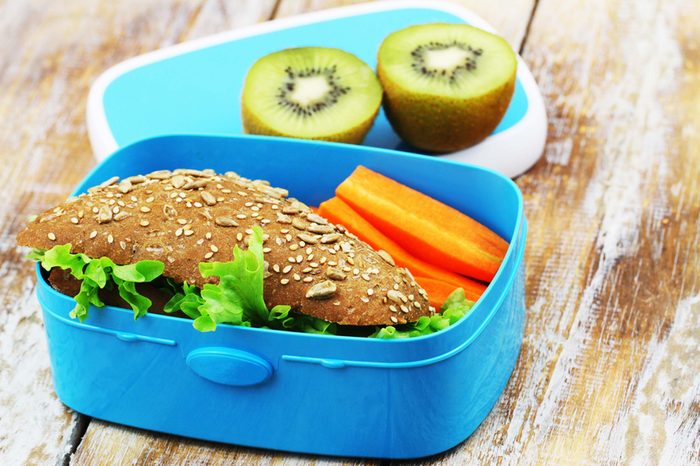
1. Pack your own meals and snacks.
Let’s start with the surest bet—your own food from home. It’s true that you can’t have liquid over the ounce count and your nail file is semi-questionable, but your culinary creations are welcomed by the TSA (as are fruits and vegetables grown in Canada). Private practice dietitian Andy De Santis RD, MPH, always brings his own whole-grain chicken sandwiches from home, ensuring he has a lunch that is not only nutritious but also less expensive than pre-packaged airport food too. “The best way to have control over what you eat while travelling is to bring what you need to eat,” he says. “You don’t always know what you’re going to get when you get to the terminal or on the flight, so this is a great preventive measure.”
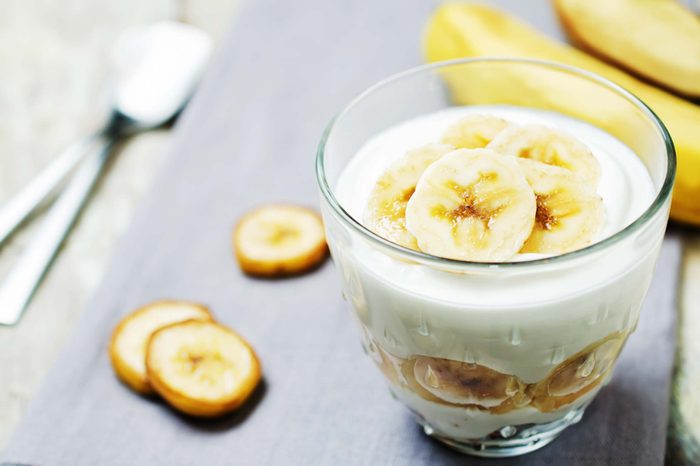
2. Eat like you would at home.
If on a Thursday morning, you probably wouldn’t eat a Pop Tart or a slew of overpriced pancakes at home, why do you opt for these high-calorie, high-sugar dishes while travelling? While it’s easier to just buy something already prepared for you, De Santis says using your at-home brain will serve your body better. “Almost all airport terminals will have a little shop selling packaged milk, cereal, nuts, Greek yogurt, and fruit. Use your creativity here and combine these foods into complete, healthy, and filling mini meals. Greek yogurt with a sliced banana, or some milk, almonds, and cereal are both great options,” he says.
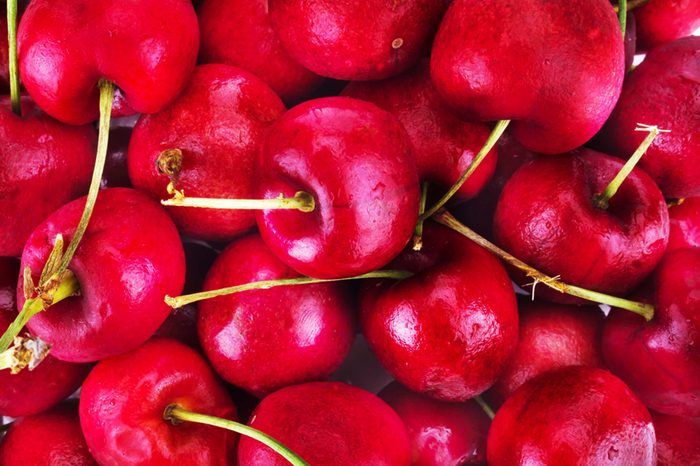
3. Pack a sleepy snack.
Can’t figure out how to sleep on a plane? One way to get some shut-eye is to give your body a natural, wholesome food that makes it sleepy and fulfilled. Registered nutritionist Amy Gorin, MS, RDN, packs a baggie of dried Montmorency tart cherries when she travels for long flights. “Tart cherries contain melatonin, which helps regulate your internal clock and may help increase overall sleep efficiency—something that helps while travelling,” she explains. Interested in a sleep aid? These are the best ones.
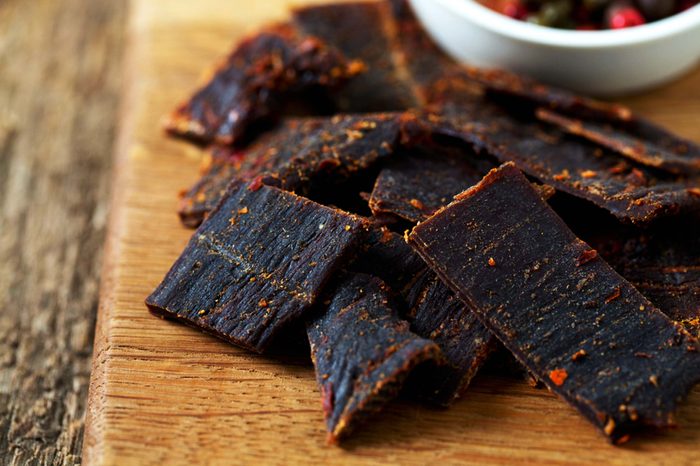
4. Double up on protein.
One of the main reasons you might make a poor selection at the airport is because of the stress of flying. Even if you’re pumped about getting to a beach or finally checking off a bucket list destination in Europe, there’s a lot going on between security and landing, and if you don’t make sure you’re full, you’ll find yourself nomming on sweets to get through the whole ordeal. Nutritionist Ken Immer, CCHE says doubling up on protein will help you stay satisfied. “Combine a pack of beef/turkey jerky with some plain or roasted nuts. The double protein punch of the jerky and the nuts will keep hunger at bay for longer, and the fat from the nuts is quick to satisfy right away. Both snacks come in multiple flavours these days, and they’re super portable,” he suggests. Here are the six best sources of protein.
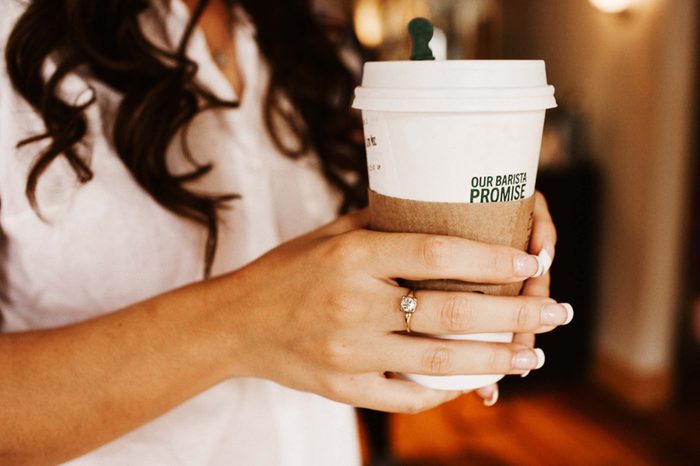
5. Find a Starbucks.
While you don’t have De Santis’ OK to get a Frappuccino with the whip and the chocolate syrup, when you’re in a bind and need to grab something before the cabin door is locked, Starbucks has some good grab-and-go options. Because Starbucks is candid about their caloric and nutritional value, you don’t have to do the math in your head as you’re digging for your passport. “Starbucks has protein boxes, and you could have a latte with milk for added protein and calcium,” he suggests. Nutritionist Jennifer Bowers, PhD, RD, also adds that a spinach and feta wrap from Starbucks isn’t a bad idea, either, especially if you’re craving something warm before flying high in the air.
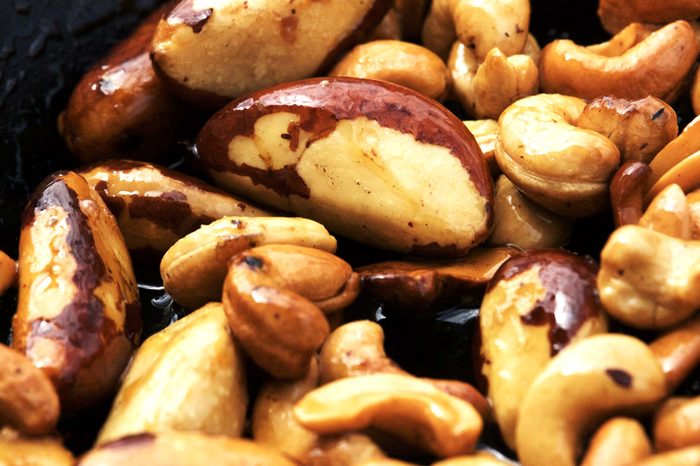
6. Load up on snacks for long flights.
If you don’t have a chance to pack your own in your carry-on, Bowers says it’s worth the extra pennies to load up on healthy snacks to get you through your flight. Why? Unless you’re flying JetBlue, you will either get no snack or only pretzels or cookies to choose from, both of which aren’t the smartest solutions to your hunger. (And airlines that do offer heartier fare often run out before they get to you.) To what does Bower give her seal of approval? “KIND or Zing bars, roasted nuts, fresh oranges, ice cold water, carrots, cucumbers, and bell peppers with hummus, or an apple or celery sticks with single-serving peanut butter packets.” Megan Faletra, a registered dietitian, MS, MPH, RDN, says if you’re vegetarian, consider trying to find a hard-boiled egg, chopped vegetables and hummus: “High in protein and low in sodium, this healthy combo will keep you feeling full and help you avoid unwanted airplane bloating,” she says.
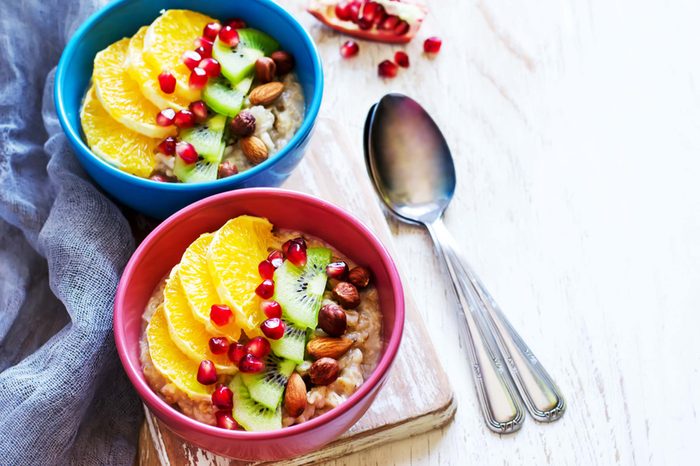
7. Bring breakfast staples.
If you suffer from food intolerances, eating well while travelling is even more challenging. Faletra suffers from Celiac disease and has a dairy intolerance, so she’s developed a special skill set involving scouring airport terminals to find healthy foods that sit well with her stomach. “I always come prepared to pull together a healthy meal for myself mid-flight,” she says. “One of my favorite options is to bring an unsweetened gluten-free oatmeal packet with a single-serve packet of almond butter, and then ask for hot water and fruit on the plane. Within minutes I have a healthy delicious meal and all I needed from the flight attendant was some hot water, and a fruit cup, which they almost always have on board,” she suggests.
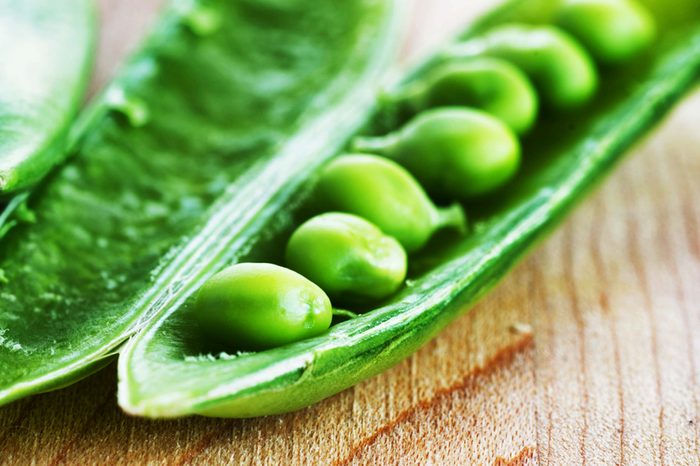
8. Like salty snacks? Choose chip alternatives.
If you’ve ever tried an elimination diet or simply wanted to clean up what you mindlessly put in your mouth, then you’ve probably practiced your detective skills on nutritional labels. The key here is to make sure sugar, corn, or soy aren’t lurking under suspicious names, and that the main components of any packaged food are words you can pronounce. This is why Faletra suggests looking for crunchy veggies instead of oily chips. “If your salty snack craving hits, try to find healthier versions of chips/crackers. Snap Peas are available in many airports these days, and are loaded with protein and fiber, and tend to be lower in sodium as well, which is ideal for flight approved snack,” she explains.
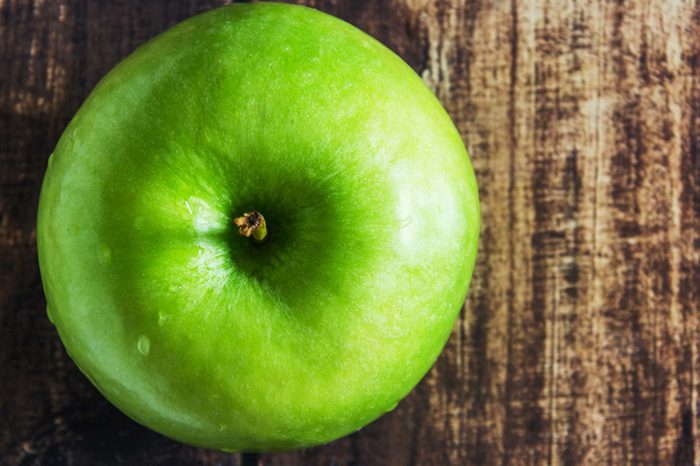
9. Make smart swaps.
Though you’ll probably add a dollar to the ring-up price if you buy an apple at the airport, filling yourself up with this superstar fruit is one of Immer’s favorite tips. “Don’t just plan on eating it as a snack; instead use it as a ‘side’ when grabbing a quick meal,” he says. “Airport food court food is usually not ‘customizable,’ but you can ditch the bun for a burger, or just decline the fries as your side and supplement with the apple.” He recommends eating the apple before your entree to fill up a bit so it’s easier to turn down the starchy side or take off the bread and not be tempted to eat it. Here are more simple swaps that can help you slim down.
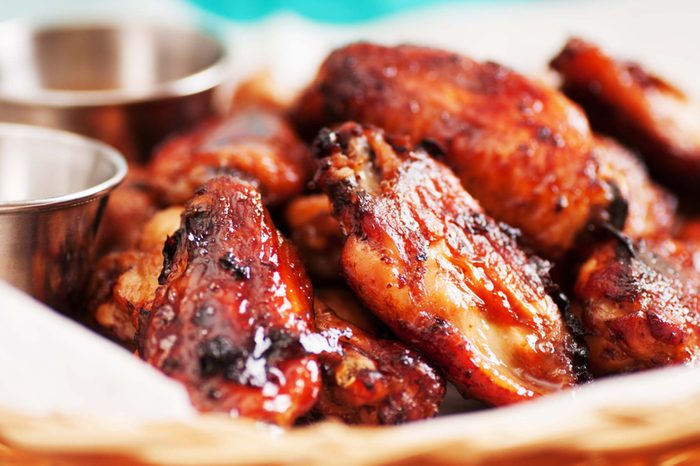
10. Choose appetizers over meals.
While some airline lounges might be cushy, most of the time, dishes at airport eateries are loaded with sodium and made from poor quality ingredients, often due to availability and the sheer physics of mass meal production. If you have time to sit down and eat while you’re travelling, Immer says to try your best to undereat rather than overeat. You’ll save calories—and cash. “Try making a meal out of an appetizer and a side dish to avoid the calorie bombs that are surely on the menu. The appetizer portion of wings, or the burger sliders—and just ditch one bun—can give you the protein you need to keep hunger at bay, and a side salad or a portion of the steamed vegetables can round out a well-balanced meal,” he says.
Next, check out 15 ways to beat jet lag.
